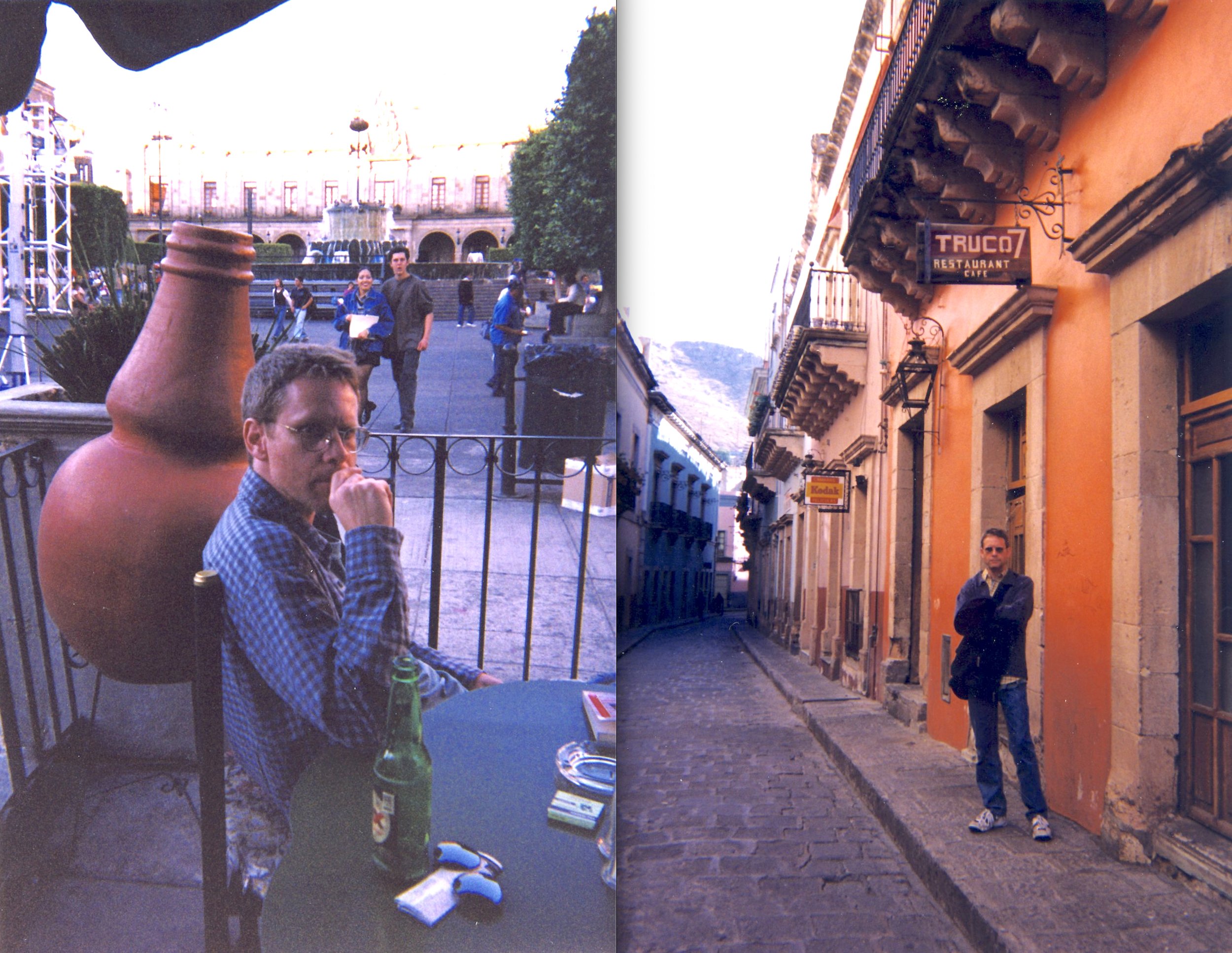The Double Refuge 🇲🇽 Señor Locke
Aura 1
🇲🇽
From Guadalajara to Guanajuato, I’ve been reading Fuentes book, Aura, the one with the black cat on the cover. The novel demonstrates how hard it is to separate fantasy from reality, and to escape the past. Like a black cat with bright green eyes, desire and nostalgia sneak into your room and blind your soul. You can see the book here, among sun clips, a beer bottle, and an ash tray, in the centre of Guadalajara, several days before I got to Guanajuato:
Aura is a strange tale of love, set in the historic centre of Mexico City. I’m reading it less to uncover any mystery about love than to unravel the Mexican world around me. And yet the book goes from the outer to the inner, often distorting the world around. For instance, the protagonist starts off searching for an address in the historic centre, which seems a perfectly ordinary thing to do. Yet when he enters the apartment of an old lady, the outer world starts to close in, and the inner world starts to open up. The colourful streets no longer exist, and we start to wonder if there isn’t some strange magic linking the old lady, the protagonist, the black cat, and the pretty fifteen-year-old girl named Aura.
I dive into the book, only to put it back on the table and look up. Then I go off to wander the colourful, winding streets.
But I always end up at the cafe, La Oreja de Van Gogh, with its coffee and waitress, and the novel on the table,. As so often in travelling, a cafe draws you in, giving you a focal point to see the world around you, becoming the centre of your momentary world.
I could sit for hours just reading and watching the waitress come and go. And as the caffeine hits the system, the mind starts to take the world around you and turn it into something else. For instance, the waitress would become more angelic by the hour. First, she would be among the lower orders, her white train dusty on the fringes, her lace a bit tattered, even a little bleary, worse for wear and tear. But still, her eyes would be steadfast, looking upward to the wrought-iron balconies of the nearby Callejón del Besos, like Juliet the archetypal angel in tight panties, unaware that her Romeo is down below, staring up the dusty lacing of her skirt.
☕️
Perhaps it's best to leave Keats and follow Byron, who already knew that the epic was doomed. Byron could at least be counted on to get his geography straight: it was Balboa, not Cortés, who stood high on that peak in Darien in 1513. And it's Byron who, despite his attack on the epic, ends up writing the longest epic in the English language: Don Juan, an epic without an epic hero, with no vistas of heaven or hell, no grand design, no Aonian Mount. No Odysseus and no Hercules.
Don Juan has a start but no end. It takes us back to Spain four hundred years ago, to the roots of the novel in Europe: the picaresque, with its journey from one episode to the next. No Grand Scheme to bring it all together. Only human art. And true to the aimless heart of the picaro, Byron leads us all over the place, from harem to Catherine the Great, never once convincing us that his mocking promise to write a Modern Epic will be kept.
Don Juan might be called a grand planless plan, with no end in sight: he died part-way into the 17th canto. As art as in life, we almost never know the exact moment we’ll be shuffling off our mortal foil.
More than Montaigne or Pascal, more than Voltaire or Swift, more even than Coleridge or Keats, Lord Byron stares demon-headed and laudenum-bent into the dawn of the Modern Age.
For Byron, the real world isn’t just a basic human experience or a religious archetype; it’s a literary form. He never loses sight of three facts: 1. we don’t live in a world with a pre-cast form, 2. we must create our own reality as we go, and 3. we can’t give our lives a final unifying form.
Life isn’t lived on a mountain top, where inspiration comes from above, and where a sacred spring or mystic oracle can tell us how it will end and what it all means. We’re functions of our time and place, and these change every moment. And we’re functions of our senses, our neurons, flesh, bones, and brains. We may dream about unity and art, but we exist in a changing world, one which creates yet transcends art. However high we fly in our thoughts, we always end up, floating or crashing, back on the ground.
⛱
Keats eventually aligned himself with Byron: he gave up Milton’s model, realizing in “Ode to a "Nightingale” that fancy cannot cheat so well as she is famed to do, deceiving elf.
I learned this lesson early in life, when the neurons were being formed into the person I would become. First, I learned it in a purely negative way, as I wrote in “Campfires”: the counsellor set me up to understand that all those holy words about purity and heaven would come crashing down. Second, I learned it in a surrealistic way, with the deceiving elf called Pyramid LSD. That was back in 1975, long before the sobriety of coffee and teaching, back when I was high as a kite, yanking at my tether, howling down the Champs-Elysées.
🇲🇽
Next: The Tiny Pyramids of Ra





